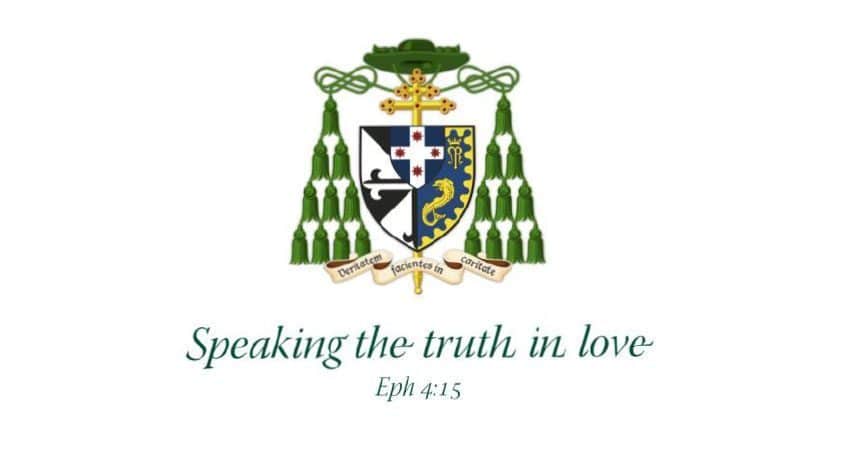Introduction for Mass for the Golden Jubilee of St Francis Xavier Parish

Introduction for Mass for the Golden Jubilee of St Francis Xavier Parish
St Francis Xavier Church, Lurnea, 19 July 2015
Welcome all to this special Mass as we celebrate 50 years of the St Francis Xavier Parish, Lurnea. I am pleased to acknowledge Fr Thu Nguyen (Parish Priest), Fr Remy Lam Son Bui (Dean of the Western Deanery), and other concelebrating clergy.
I am also pleased to acknowledge the Principals from our local schools: Mrs Fran Bonanno (St Francis Xavier Primary), Mr David Parawa (St Catherine of Siena Primary), Mr David Fetterplace (All Saints Senior College), Ms Jane Donovan (Good Samaritan College), Mr Steven Gough (All Saints Catholic Boys College) and Mrs Iris Nastasi (Clancy College).
Above all, I welcome the parishioners and friends of this parish! This is a day to give thanks for those who built up this parish and have gone before us marked with the sign of faith; to delight in all that is presently being achieved here; and to look forward in hope as we petition for God’s continued blessing on this parish.
Homily for Mass for the Golden Jubilee of St Francis Xavier Parish
St Francis Xavier Church, Lurnea, 19 July 2015
At the National Library in Canberra at the moment there is an exhibition starring the Rothschild Prayer Book, an early sixteenth century Book of Hours lavishly decorated with late Renaissance religious art. Some of the finest Flemish illuminators applied their skills to produce the 67 full-page miniatures, presumably for a very rich client, in the Dutch imperial court. It passed to the counts palatine of Heidelberg and then disappeared from historical sight for more than two centuries until the late 19th century when the Rothschild family came to possess it. It was confiscated from them by the Nazis at the German annexation of Austria in 1938 and only returned to the family by the Austrian government in 1999 after considerable international pressure – such as is described in Helen Mirren’s latest film, The Woman in Gold. Valued today at a cool $15.5M, the manuscript was auctioned and bought by Australian businessman and owner of the Seven Network, Kerry Stokes – which is how it has ended up improbably in Australia.
The miniatures in the prayer book contain images of God the Father holding the dead Christ and saints such as the Madonna crowned by angels, Mary Magdalene with her ointment jar, John the Divine with his poisoned chalice and St Jerome with a rather tame-looking lion. There are illusionistic borders strewn with flowers and insects, various biblical and mythical characters, and monsters you might see in a modern sci-fi film. The background landscapes and interior settings are rich in details of ordinary life in 16th century Ghent. The title page to the catalogue shows a woman about to bathe; on other pages farmers till the soil or reap the harvest; people dance in a field around grazing sheep or travel by some rather uncomfortable looking means of transport.
This mixture of the sacred and the profane did not make the book any less one of personal piety: for our love of the ordinary and the everyday in God’s creation should point us to and complement the extraordinary and the supernatural that we know in Christ and His saints. This is precisely the genius of Christian art and culture.
Today we celebrate fifty years of the mixture of the sacred and the profane in this parish. In the very same year of this parish’s foundation the Second Vatican Council declared that “the joys and hopes, the griefs and anxieties of the people of this age, especially those who are poor or in any way afflicted, these are the joys and hopes, the griefs and anxieties of the followers of Christ. Indeed, nothing genuinely human fails to raise an echo in their hearts.” At that time Lurnea was a rural idyll, like that presumed in the Rothschild Book of Hours. But the population of Australia and especially of Sydney was exploding with the post-war migration and the baby boom. Liverpool parish was forced to erect Mass centres in Hillview and Austral. Eventually there was a stable enough community here in rural Lurnea to warrant a church and a priest and a parish. On 30 June 1965, almost exactly 50 years ago, this came to be. Fr Cyril Hatton – the priest who baptized me a few years before in Lakemba – was appointed as your first parish priest. In keeping with the rustic nature of the area at that time I believe that people often put home-grown produce rather than money on the collection plate. Groups such as the Vinnies, the Altar Society, the Xaverians, the Ladies Auxiliary and individual parishioners contributed to the growth and flourishing of the parish. And so did the priests: in the Rothschild Prayer Book there are images of the faithful at a High Mass celebrated with priest and deacon in plush green vestments, while the subdeacon and server attend to the thurible; of a Requiem Mass celebrated in rich black silks, with religious and lay faithful in attendance; and a Christian burial complete with borders of skulls and ordinary people on their knees in prayer. Such, in a scaled down form, would have been the early liturgical life here.
Parishes were then, and continue now to be, the place where everyday Catholics could bring their lives to God, placing their needs on the altar of the Mass, joining hands before that altar and vowing Holy Matrimony, entrusting their children to the Blessed Trinity in Baptism and Confirmation, unburdening their sins to the all-merciful Lord in Confession, exposing their frailty and sickness to the healing Lord in the Anointing of the Sick, confiding their hopes and dreams to His heavenly Mother. For more than half a century people have received the grace of the sacraments and solicitude of the priests here, as well as the friendship and mutual support of fellow parishioners. Here individuals and groups have offered worship to God, catechesis to the open hearted, education to the young, outreach to the poor and lonely, ministry to youth and communion to the sick.
In our first reading today the Prophet Jeremiah describes the longing in human hearts for a good shepherd; and in our Gospel Jesus notices the same thing and answers that longing, taking pity on a people who were “like sheep without a shepherd” and setting himself to teach them “at some length” (Jer 23:1-6; Mk 6:30-34). So it was that they could gather then on Galilee’s shore or gather fifty years ago at rural Hillview, to experience that silent attentiveness and holy leisure that Christ and the apostles sought when they went on retreat. And here again, in now thoroughly metropolitan Lurnea we can receive that “good news of peace” that Paul tells us it was Christ’s mission to bring (Eph 2:13-18). Under the care of dedicated priests and through the contribution of generous parishioners, St Francis Xavier’s Parish has become one of the healthiest in Sydney, with a Sunday Mass attendance of one in five, significantly higher than the national and archdiocesan averages. Your sacramental schedule is leavened with the ministries of the schools, the Vinnies, Care Group, Craft Group, the Catechists. Yet in one in five is at Mass, four out of five are not! St Francis Xavier, the great missionary, would be sending you out to them, to bring Christ and His Church to them and bring them home to Christ and His Church. So proud as we are of what has been achieved, we dare not rest on our laurels. There is much work for Lurnean Catholics to do to bring the Good News of God’s mercy to the people hereabouts. May God bless you and your efforts in spreading His life and love to all! Happy 50th birthday! Ad multos annos!

